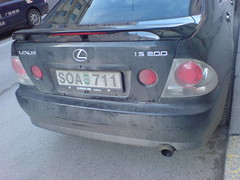Also discussed here: Details of Sam Schwartz’s “Fair Plan” and Other Orcutt+Komanoff Highlights (Ben Fried, Streetsblog, Mar. 7,2012)
And here: The mother of all traffic plans hits NYC (Daniel Massey, Crain’s New York Business, Mar. 21, 2012)
Today we review an interesting proposal to address some of the issues in the failed 2008 plan to introduce congestion charges for New York City failed at the state level (although it was supported by the city’s public). One of the big factors was the lack of benefit to many from outside the city who would pay tolls- and this is where the main opposition was. The 2012 plan introduces a collections system that does not involve money, improvements to highways and flexible pricing according to demand rather than fixed.
Many of the questions posed (with some answers) are the same ones that other cities considering road pricing need to consider


Key Quotes:
“2008 version The proposal was to introduce a cordon on the southern half of Manhatten between 0600-1800 weekdays for all traffic except buses, taxis/for-hire vehicles, emergency vehicles and vehicles of disabled motorists”
“2012 proposal The principles he used to reform these tolls were to:
- Apply market based pricing where congestion is severe and there are public transit alternatives;
- Lower tolls where alternatives are poor and congestion is low”
“The calculated benefits are time savings worth $3.5 billion per annum from reduced congestion arising from a 22% reduction in travel time on average in the CBD. There are no doubt other benefits from reduced emissions affecting public health”
“the proposed cycle/pedestrian bridges are an excellent way of promoting what are, in the long run, rather low cost alternatives to the car”
“Questions:
- How should changes in tolls be assessed? -If traffic regularly operates at lower speeds, it can justify an increase, if it operates at higher speeds, the opposite.
- How will a dedicated fund be set up to comfort those paying the tolls? -an independent arms length board be appointed, separate from the MTA, which will assess proposals for the use of revenues from relevant public transportation bodies.
- When will existing toll systems be transitioned to fully electronic free flow tolling? -The savings made in abolishing toll plazas and the congestion they create will be worthwhile
- How can discounts/exemptions be contained?- calls for them assessed against some key principles around economic benefit, social equity, practicality, effect on enforcement and cost.
- What future proofing should any system have?- flexible enough to cope with pricing that may vary at different times of day and different directions of travel.”
Related articles
- Road Pricing in the USA (pollutionfree.wordpress.com)
- What are the Economics of Road Pricing and Congestion? (pollutionfreecities.blogspot.com)
- Chicago inching closer to freeway congestion charges? (autoblog.com)
- Solving Traffic Congestion (alignment.wordpress.com)
- Congestion Charge Is Traffic-Cutting Magic in Milan (treehugger.com)
- What is the congestion charge in London? (greenanswers.com)
- Traffic Jam Economics (economix.blogs.nytimes.com)
























